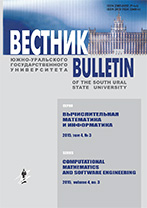|
This article is cited in 1 scientific paper (total in 1 paper)
Overview of fog computing organization technologies
A. A. Kirsanovaa, G. I. Radchenkoa, A. N. Chernykhba
a South Ural State 1South Ural State University (pr. Lenina 76, Chelyabinsk, 454080 Russia)
b Ensenada Research Center (Carretera Ensenada - Tijuana No. 3918, Ensenada, 22860 Mexico)
Abstract:
As the Internet of Things (IoT) becomes a part of our daily life, there is a rapid growth in the number of connected devices. A well-established approach based on cloud computing technologies cannot provide the necessary quality of service in such an environment, particularly in terms of reducing data latency. Today, fog computing technology is seen as a promising solution for processing large amounts of critical and time-sensitive data. This article reviews cloud computing technology and analyzes the prerequisites for the evolution of this approach and the emergence of the concept of fog computing. As part of an overview of the key features of fog computing, we analyze the frequent confusion with the fusion of the concepts of fog and edge computing. The paper provides an overview of fog computing technologies: virtualization, containerization, and orchestration, as well as a systematic analysis of the most popular platforms that support fog computing. As a result of the analysis, we offer two approaches to the classification of fog-computing platforms: on the principle of openness/closure of components, as well as three-level classification based on the provided platform functionality (Deploy-, Platform- and Ecosystem as a Service).
Keywords:
cloud computing, fog computing, edge computing, internet of things.
Received: 14.06.2020
Citation:
A. A. Kirsanova, G. I. Radchenko, A. N. Chernykh, “Overview of fog computing organization technologies”, Vestn. YuUrGU. Ser. Vych. Matem. Inform., 9:3 (2020), 35–63
Linking options:
https://www.mathnet.ru/eng/vyurv240 https://www.mathnet.ru/eng/vyurv/v9/i3/p35
|

| Statistics & downloads: |
| Abstract page: | 239 | | Full-text PDF : | 169 |
|




 Contact us:
Contact us: Terms of Use
Terms of Use
 Registration to the website
Registration to the website Logotypes
Logotypes








 Citation in format
Citation in format 
